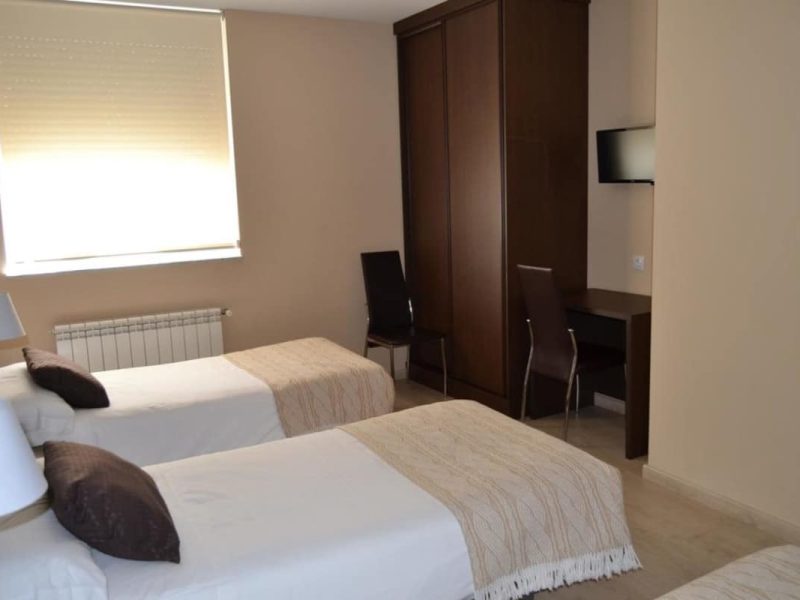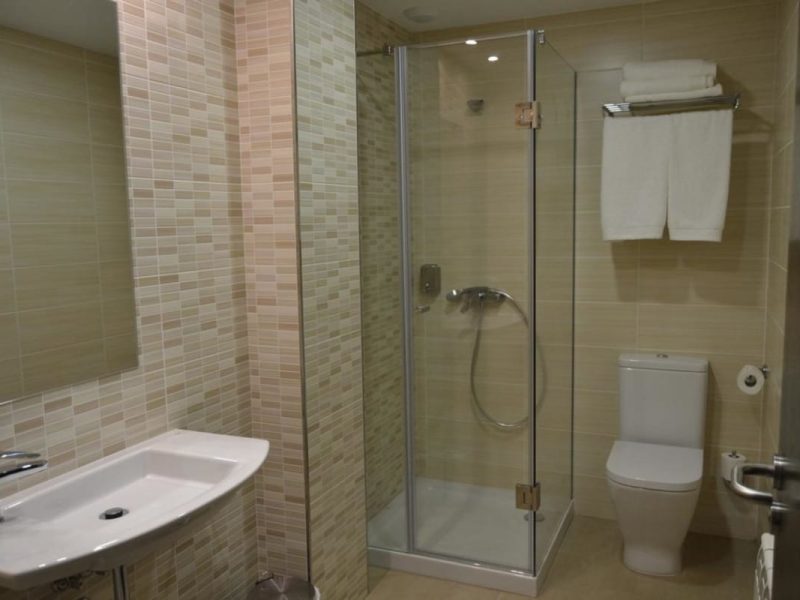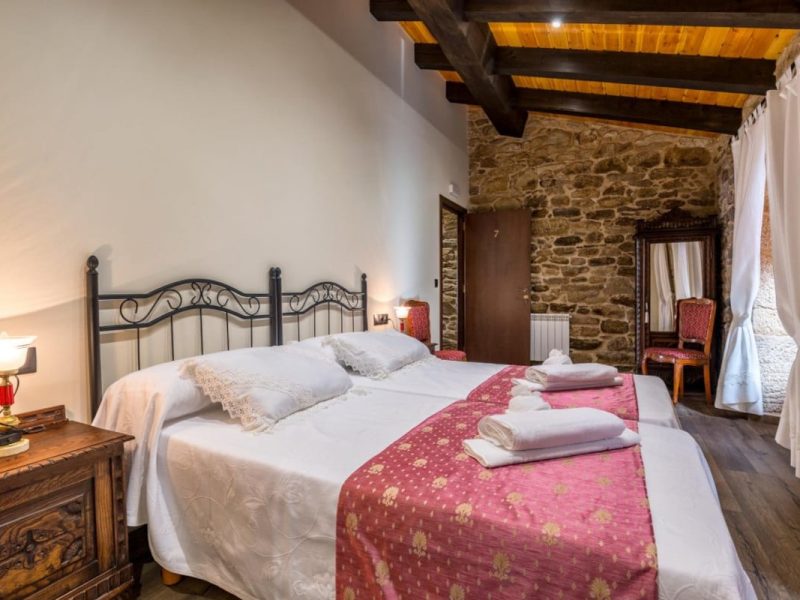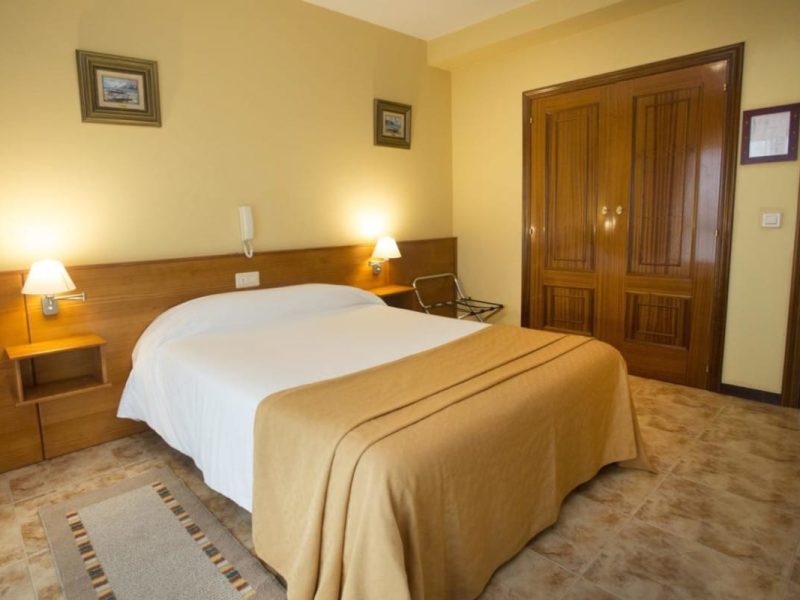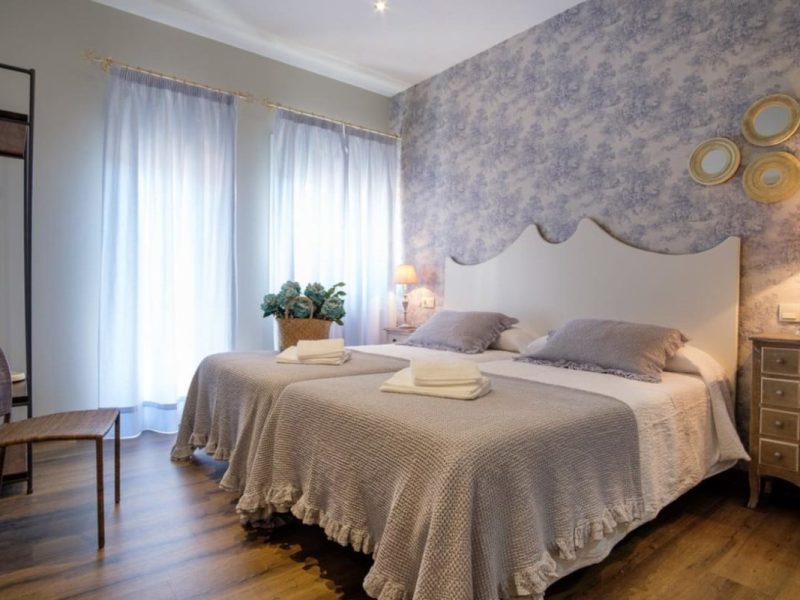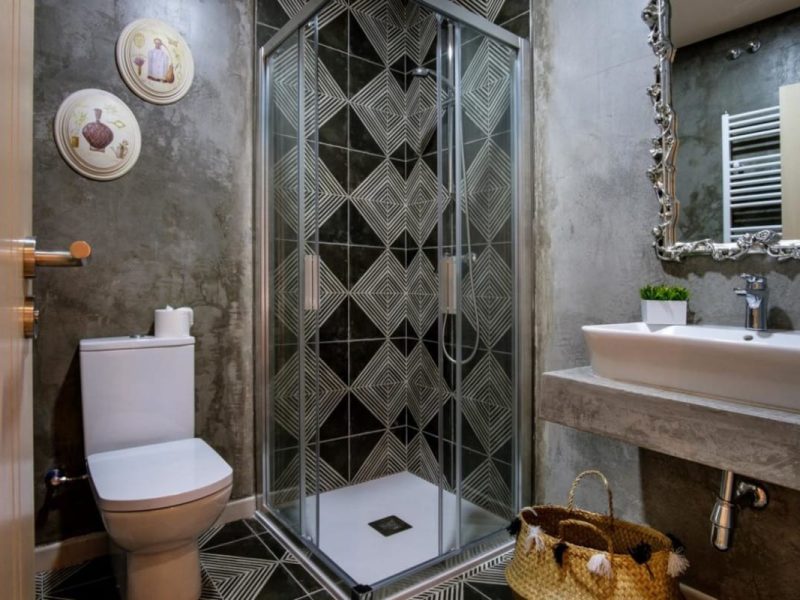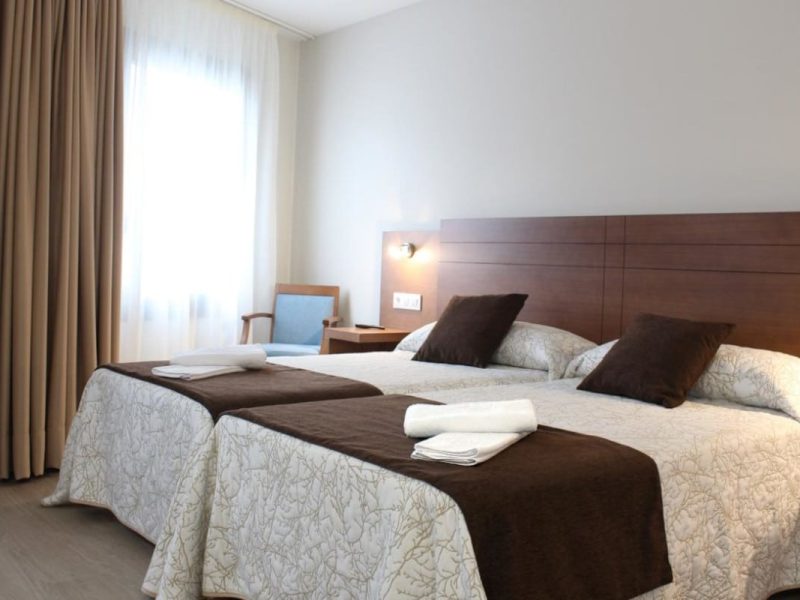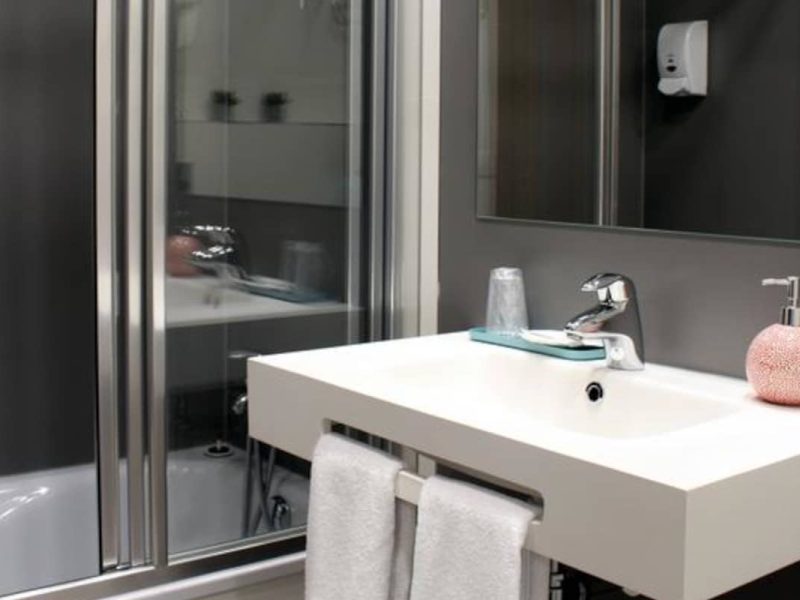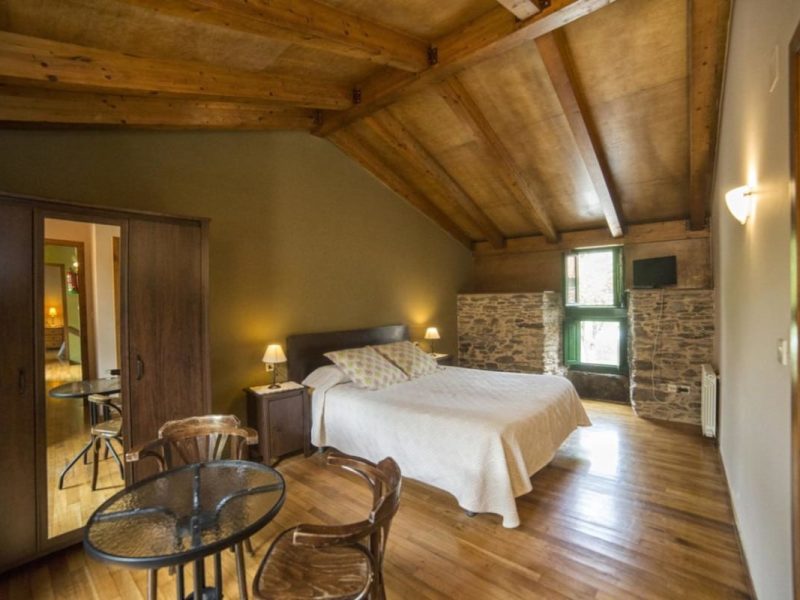Way from O Cebreiro to Santiago
Every great journey begins only with dreaming about it.
Discover the Way from O Cebreiro to Santiago
A unique journey
Way
The Camino de Santiago from O Cebreiro to Santiago (French Way) is an emblematic place, birthplace of legends, mysteries, and miracles. It delights us with fairy tale landscapes, thanks to its privileged location between Castilla y León and Galicia, close to the Os Ancares and O Courel mountain ranges.
We will discover on the route the Monastery of San Xulián de Samos, which dates back to the 6th century, of unparalleled beauty and grandeur. Once we reach Sarria, we will face the last 100 km of the Camino Francés, until we reach Santiago de Compostela.

More details
Origin
Cebreiro

Destination
Santiago

Duration
9 days / 8 nights / 7 stages

Total Kms
159

Price / person
745€
Book now!
Indicates the number of persons

services
Services
Full and customizable services for a worry-free experience on the Wey of Santiago.
Services Included
Accommodation in Hotels, Rural Houses, Hostels
Special breakfast
Travel assistance insurance in Spain
Roadside assistance vehicle in case of emergency
Digital information dossier of the Camino
On-Route Telephone Assistance
Luggage transfer on the stages
✓ 1 suitcase per person, maximum 20Kgs
Special gifts, including the Pilgrim's Credential, the Pilgrim's Shell, and a Typical Galician Product.
No cancellation fees
✓ Up to 10 days before starting the Camino
IVA
Optional Services
Dinner supplement
✓ Consult
Split Stage Palas de Rei-Arzua (2 stages)
✓ Check rate.
Transfer from Santiago Airport to O Cebreiro
✓ Check rate.
Extra night in Santiago
✓ Check the rate.
Additional baggage
✓ Check rate if you have more than 1 suitcase per person
1 Day Trips (Bus)
✓ Finisterre (Costa da morte) and/or Rias Baixas.
Cancellation Insurance
Remember that the cost of the optional services chosen will be added to the base price of your route. We are committed to making your pilgrimage an unforgettable and carefree experience. Welcome to the Wey!
Stages
Discover the Wey of Santiago towards the majestic Santiago de Compostela.
Day 1: Arrival at O Cebreiro. Lodging
Welcome to the beginning of your journey. Get ready for an unforgettable adventure!
Day 2: Stage from O Cebreiro to Triacastela (21.6 km)
- Duration: 5h 30m
- Difficulty: Medium
Breakfast and start of the first stage of the Camino de Santiago from O Cebreiro.
We enter Galicia through the French Way. O Cebreiro offers one of the most beautiful landscapes of the Camino. A place of great tradition and mysticism, with its emblematic Romanesque Church of Santa María de O Cebreiro, where the Miracle of O Cebreiro and the legend of the Holy Grail took place.
From O Cebreiro we head towards Hospital da Condesa, crossing the way, several times until we reach Alto de San Roque and subsequently Alto de O Poio (1337 meters – the highest point of the French Way in Galicia with spectacular views). From here, we start a slight descent to Fonfria, and then descend to the Oribio Valley until we reach Triacastela.
In Triacastela, the final point of a stage established in the Codex Calixtinus by Aymeric Picaud, stands out the Church of Santiago, with its Romanesque apse.
Arrival in Triacastela. End of the stage. Lodging.
Day 3: Stage from Triacastela to Sarria, via Samos (24.6 km)
- Duration: 6h
- Difficulty: Low
Breakfast and start of the stage.
From Triacastela, there are two possibilities to reach Sarria, the variant via Samos and the variant via San Xil. Both are of great beauty, but if we have to choose one, we believe that the option of Samos is worth it, where you can see the impressive Benedictine Monastery of Samos, the main monument of the Galician route, except for the Cathedral of Santiago, as well as the Chapel of the cypress tree, a tree that is over 1000 years old.
We leave Triacastela, following the way (3.5 km), alongside the course of the Oribio river, until we divert towards San Cristovo. We will successively reach Renche and San Martiño.
In our Camino de Santiago from O Cebreiro, we will encounter numerous forests and streams until we reach Samos. From here, following our “yellow arrows” and passing through different population centers, we will reach Perros, where the two variants of the Camino converge, which started from Triacastela, until we reach Sarria.
Sarria is the main population center between Ponferrada and Santiago de Compostela, where we can see, among others, the Church of San Salvador, Romanesque with a Gothic facade, and the Convent of A Magdalena. We will admire the Rúa and the Tower of the old medieval castle, as well as the Rúa Maior.
Arrival in Sarria. End of the stage. Lodging.
Day 4: Stage from Sarria to Portomarín (22.75 km)
- Duration: 5h 30m
- Difficulty: Low
Breakfast and start of the stage.
Throughout our itinerary of the Camino de Santiago from O Cebreiro, this is probably the most emblematic stage we will encounter. All motivated by its scenic beauty and for passing through Kilometer 100 of this ancient route.
We will encounter typical villages and numerous bodies of water of great beauty, as well as some of its famous “corredoiras” and masses of chestnut and oak trees. The stage poses no difficulty. The terrain is gentle and undulating.
- If you do not have the necessary days to start in the town of O Cebreiro, you can make your journey in 7 days starting the Camino from Sarria to Santiago.
During the stage, we will be able to admire, among other monuments, the Romanesque Church of Barbadelos, Romanesque Church of Ferreiros, Belesar Reservoir formed by the Miño River (Portomarín), and the Church of San Nicolás (Portomarín).
Arrival in Portomarín. End of the stage. Lodging.
Day 5: Stage from Portomarín to Palas de Rei (25 km)
- Duration: 5h 30m
- Difficulty: Low
Breakfast and start of the stage.
We start the journey crossing the Belesar Reservoir by a footbridge. Starting with a slight ascent, which concludes near Ligonde.
Stage that largely runs along trails, close to the way, or in some cases through asphalted areas. Here we find multiple signs indicating that we are in a pilgrimage area, such as the famous “cruceiros.”
In this stage, it is worth mentioning the Cruceiro de Lameiros and the Monastery of San Salvador de Vilar de Donas.
Arrival in Palas de Rei. End of the stage. Lodging.
Day 6: Stage from Palas de Rei to Arzúa (29.5 km)
- Duration: 7h 30m
- Difficulty: Medium
Breakfast and start of the stage.
We enter this stage in the lands of the province of La Coruña, where we will encounter masses of eucalyptus and pine trees, as well as numerous medieval bridges, such as those of Leboreiro and Furelos, as well as one of the idyllic locations of the Camino, in Ribadiso do Baixo, on the outskirts of Arzúa.
For lovers of good food, Melide is worth mentioning, a town famous for its octopus, and a mandatory stop for pilgrims. Also, remember that Arzúa gives rise to the denomination of origin of its famous tetilla cheeses.
The most interesting places we will encounter are: Church of Santa María de Leboreiro, Church of Santa María de Melide, Melide Museum, Ribadiso do Baixo Bridge, Church of Santiago (Arzúa)
Arrival in Arzúa. End of the stage. Lodging.
RECOMMENDATION
For those with little physical preparation or who prefer to undertake the stage in a more calm and relaxed manner, it would be advisable to divide the stage into two days:
- Stage from Palas de Rei to Melide (15.2 km)
- Stage from Melide to Arzúa (14.5 km)
Day 7: Stage from Arzúa to Pedrouzo (19.2 km)
- Duration: 4h 40m
- Difficulty: Low
Breakfast and start of the stage.
Nos vamos a encontrar un terreno agradable y fácil de andar, entre masas de árboles y con suaves vaivenes, alternados con zonas próximas a la carretera, que tendremos que atravesar en ocasiones, para concluir finalmente en Pedrouzo.
It is worth mentioning the Church of Santiago, in Boente, with a beautiful carving of Santiago Peregrino.
Arrival in Pedrouzo. End of the stage. Lodging.
Day 8: Stage from Pedrouzo to Santiago de Compostela (19.9 km)
- Duration: 5h
- Difficulty: Low
Breakfast and start of the stage.
Probably, we have that double sensation, of wanting to reach the long-awaited end of the Camino, and the opposite feeling of “this is ending,” which every pilgrim experiences.
A stage of anxiety and joy, where the distance doesn’t matter because “it’s already there.” It’s a smooth journey, similar to the previous ones, except for the ascent to San Marcos from Lavacolla, a place named after the stop pilgrims made before arriving in Santiago to cleanse themselves in the river that flows there and “present themselves before the Apostle’s tomb.” Passing through Monte do Gozo and descending to Santiago de Compostela, just 4 kilometers more.
Arrival in Santiago de Compostela and the end of our wonderful Camino de Santiago. Lodging.
All of Santiago de Compostela is worth mentioning, especially the Cathedral of Santiago and the Portico of Glory with its renovated façade, which deserves a special visit, as well as touring the cathedral’s rooftops and the surroundings of the holy city.
Day 9: Breakfast - End of our services
We’re coming to the last day of your trip! Enjoy breakfast and conclude this unforgettable experience with us.
Thank you for being part of this adventure!
This itinerary will take you through the most popular stages, allowing you to experience the beauty and culture of the Wey of Santiago. Be sure to book accommodation in advance, as it can get crowded, especially in the high season.
Safe travels and buen Wey!
Lodging
In our constant effort to provide the best experience to our customers, we want to assure you that we are committed to your rest and comfort. The accommodations we offer have been carefully selected and provide private rooms with private bathrooms, along with all the necessary services to make the most of your stay. It is important to note that we will never put you up in hostels.
Since these accommodations have a limited capacity, we will provide you with the exact name once you confirm your reservation and we verify availability on the dates of your choice. Your satisfaction is our priority!
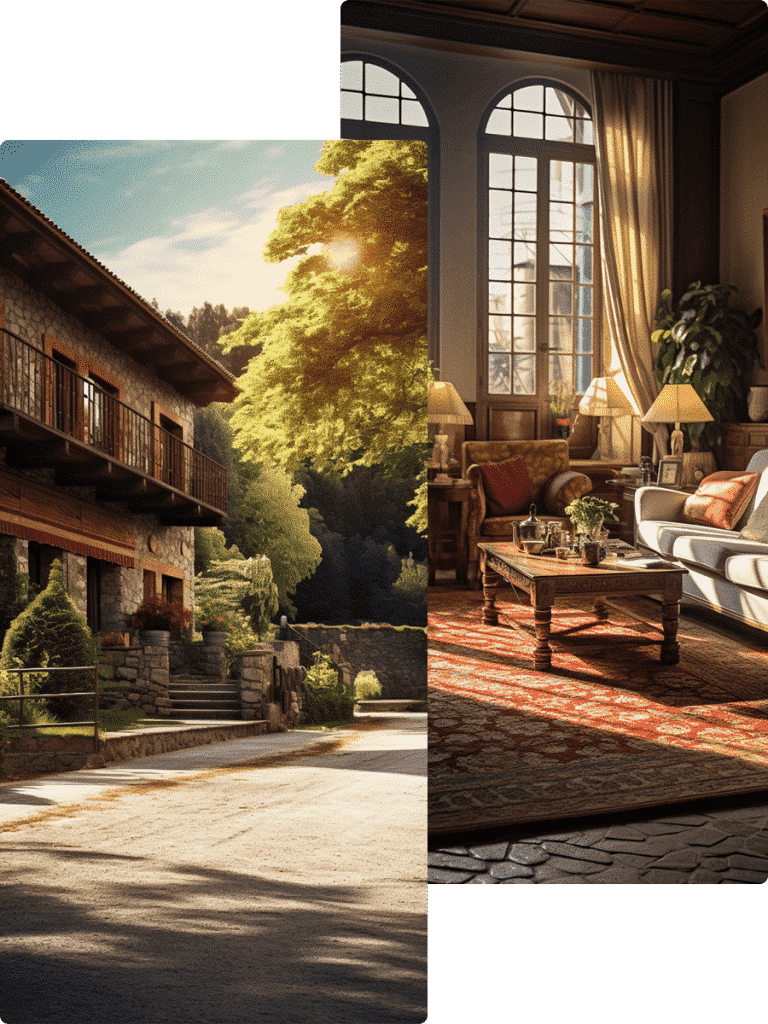
Frequently Asked Questions
How to get to O Cebreiro
We indicate the different options for how to get to the Camino Francés starting at O Cebreiro.
Option 1: Private car
And leave the vehicle parked in Piedrafita do Cebreiro, where you will be staying, and there you can park your vehicle in the vicinity of the accommodation.
Option 2: Bus (Alsa)
With frequent departures from the South Bus Station in Madrid, and from Madrid Airport (Terminal 4). The best option is to get to Piedrafita do Cebreiro, which is just a few kilometers from O Cebreiro. The accommodation where you will be staying is expected to be located in Piedrafita do Cebreiro, and the following day you will be transported to O Cebreiro to begin the first stage of the Camino, a mystical place and the birthplace of the Galician Holy Grail Legend.
Option 3: Train (Renfe)
You can reach the city of Ponferrada, which has the nearest train station, and from here take a bus to Piedrafita do Cebreiro.
Option 4: Airplane
Santiago de Compostela Airport is the best and closest option to later travel to Piedrafita do Cebreiro.
From Santiago Airport, there are two ways to get to Piedrafita do Cebreiro:
— Bus, as mentioned above
— Private transfer: pick-up at Santiago airport and direct transfer to the Piedrafita do Cebreiro hotel. Please inquire about the service rate.
Is it necessary to have special physical preparation to perform this section?
No special physical preparation is required to complete this section of the Camino. Although some stages present a medium difficulty, especially in areas with ascents and descents, the route is accessible for people with normal physical condition. Additionally, we offer the option to customize the route and divide longer stages into additional days. This is ideal for older people, families with children, or pilgrims who prefer to walk shorter distances and enjoy the journey at a more relaxed pace.
What is the best time of year to do the Camino from O Cebreiro?
The best time to do the Camino de Santiago from O Cebreiro is between April and October. During these months, the weather in Galicia is milder, with pleasant temperatures and less chance of heavy rainfall. However, keep in mind that July and August are the months with the highest number of pilgrims, so if you prefer a quieter experience, consider traveling in spring or autumn.
What type of equipment and clothing do I need to bring?
It is essential to wear comfortable footwear suited to your feet, preferably hiking boots. We also recommend breathable, quick-drying clothing, extra layers for cold weather, a waterproof jacket or poncho for rain, and a cap or hat for the sun. Don’t forget a lightweight backpack, a reusable water bottle, and a small first aid kit with basic essentials.
What to see on the Camino de Santiago from O Cebreiro
Stage from O Cebreiro to Triacastela
We begin our organized Camino de Santiago trip with the iconic Romanesque Church of Santa María de O Cebreiro, birthplace of legends and the Galician Holy Grail (which appears on the Galicia coat of arms).
In Liñares, the ancient Parish Church of San Esteban stands out.
In Hospital da Condesa, its Church, which has the same layout as the one in O Cebreiro.
In O Biduedo, the Chapel of San Pedro.
In Triacastela, the Church of Santiago, with its Romanesque apse.
Stage from Triacastela to Samos and Sarria
In Samos, you can see the impressive Benedictine Monastery, the main monument in our organized Camino de Santiago trip, apart from the Cathedral of Santiago, as well as the Chapel of the Cypress, a tree over 1000 years old.
In Sarria, we will see, among others, the Church of San Salvador, Romanesque with a Gothic façade, and the Convent of A Magdalena. We will admire the tower of the old medieval castle, as well as Rúa Maior.
What is the terrain and way conditions like on this stretch?
The section from O Cebreiro to Santiago features a combination of rural ways, forest trails, and some paved sections. Although there are stages with ascents and descents, especially at the beginning, the overall difficulty is low to medium. The landscape is varied, passing through mountains, valleys, and small Galician villages.
Is it necessary to reserve accommodation in advance?
Since we offer selected accommodations with limited capacity, it is recommended to book in advance to ensure availability on your desired dates. This is especially important during peak season, when demand is higher.
What gastronomic options will I find during the Camino?
Galicia is famous for its rich gastronomy. Along the way, you can enjoy typical dishes such as pulpo a la gallega in Melide, Arzúa cheeses, galician stew (caldo gallego), empanadas, and a variety of local seafood and meats. There are also options for special diets, although it is advisable to inform in advance.
Do I need to bring cash or are cards accepted in establishments?
Although in larger cities and towns, credit and debit cards are accepted, in small villages and rural establishments, it is common for them to only accept cash. It is recommended to carry enough cash for daily expenses such as meals, drinks, and stamps for your pilgrim’s passport (credencial).
Do you still have doubts about the Camino?
This video will give you a more detailed and visual look at what to expect on your adventure. Don’t miss it!


